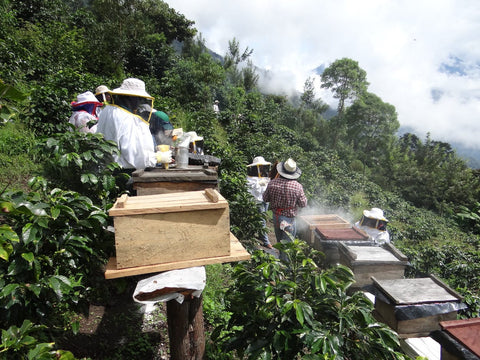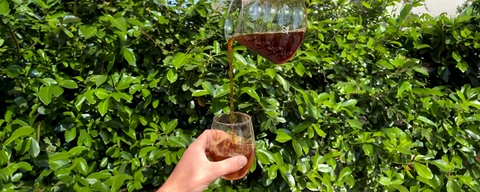First Published - April 26, 2010
In early February 2010 I visited a new producer group in south of Costa Rica that we’re working with this year for the first time. But more about that in another place. So whilst down near the Panama border I took the opportunity to travel to one of the remotest areas of Costa Rica called, Bioally, to visit Gonzalo Hernandez Solis at his Finca Coffea diversa. The concept of his farm is a coffee varietal botanical garden (Jardín de Variedades) which is in the midst of creation.
Generally coffee farms are limited-varietal plantations, where just one or two of the most common botanical cultivars, Caturra, Catuai, Catimor, Typica, or Bourbon are planted.
Almost all of the planted arabica coffee varieties grown in the world today are derived from the C. arabica Typica and C. arabica Bourbon. So, for that reason the genetic composition of almost all of the arabica coffee grown all over the world has low level of heterogeneity.
Therefore, Gonzalo suggests the main differences in cup profiles are generated by the microclimates and geographic conditions where the coffee is grown, with less influence from genetic heterogeneity of the coffee plant. The homogeneity within these populations is further enhanced by the predominantly self-pollinating nature of Coffea arabica.
Gonzalo at Coffea diversa has acquired the largest private collection in the world of rare species, mutants, and cultivars, and has a project to test the source of diverse cup profiles offered through genetic heterogeneity.
These rare and exotic varietals have not been commercially available, mostly because of extremely low yield and susceptibility to disease.
So, the question he is asking is what is the effect of genetics on cup quality? It’s answered through working with an extensive range of different cultivars, giving genetic heterogeneity, under controlled planting conditions and with the potential to create an enormous source of different taste profiles. Gonzalo has created an astonishing and beautiful coffee farm laboratory to examine possibly the most overlooked and under-researched factor influencing taste profile.
Garden Setting:
As I approached within reach of the farm gate entrance, I could see why Gonzalo describes this as a botanical garden. It was delightfully planted, with a large range of flowering shrub and tree species bordering the rows of young coffee trees. This first section of the farm is separated into different plots for each species, each plot contains up to 25 different identical coffee trees; many are rare botanical varietals. When these trees have matured to produce sufficient beans to sample roast and determine cup quality, then if the coffee is deemed worthy, a micro-lot sized plantation is created in a different section of the farm.
Gonzalo first bought the land more than 20 years ago; geographically it is difficult to reach so just a few have tried to grow coffee there. Although only 1200-1350 mASL, Gonzalo is enthusiastic about the extremely good micro-climate and soils which he believes have the capacity to grow excellent coffee. The farm is close to La Amistad International Park, the largest forest reserve in Central America with about 500,000 hectares of protected primary tropical rainforests. The farm extends to around 150h; nearly 30% remains as forestland and the natural streams are protected by 50m boundary of wooded area.
It is hugely impressive and the results of an obsessive and visionary Gonzalo Hernandez Solis. Through the next few years as his results emerge, it will be interesting to discover which of the many varietals produced under the growing conditions at Finca Diversa, has the potential to reveal excellence in the cup. Coffea diversa will make these rare coffee species and cultivars available, maybe even for the first time, so coffee devotees can discover these cup profiles.
The Mother of Arabica
Genetic studies suggest that Coffea arabica originated about one million years ago, somewhere in the vicinity of southwest Ethiopia, southern Sudan or northern Kenya as a result of a spontaneous cross between Coffea eugenioides (maternal) and Coffea canephora (robusta) that gave birth to Coffea arabica. There is still some debate about which was the paternal progenitor as some scientists say that it was not Robusta but Coffea congensis. There is unanimous consensus as to the maternal progenitor, Coffea eugenioides. This is supported by means of molecular markers, gene sequencing and genomic in situ hybridization.
Interestingly, Coffea eugenioides has a low caffeine content; Coffea arabica has an average caffeine content of 1.2%, Coffea canephora has a caffeine content range of 1.5-3.3%, Coffea eugenioides has only 0.3.-0.6% caffeine content.
Coffea eugenioides is now native to the highlands of East Africa, where it occurs in the eastern part of the DR Congo, Rwanda, Uganda, Kenya and western Tanzania.


